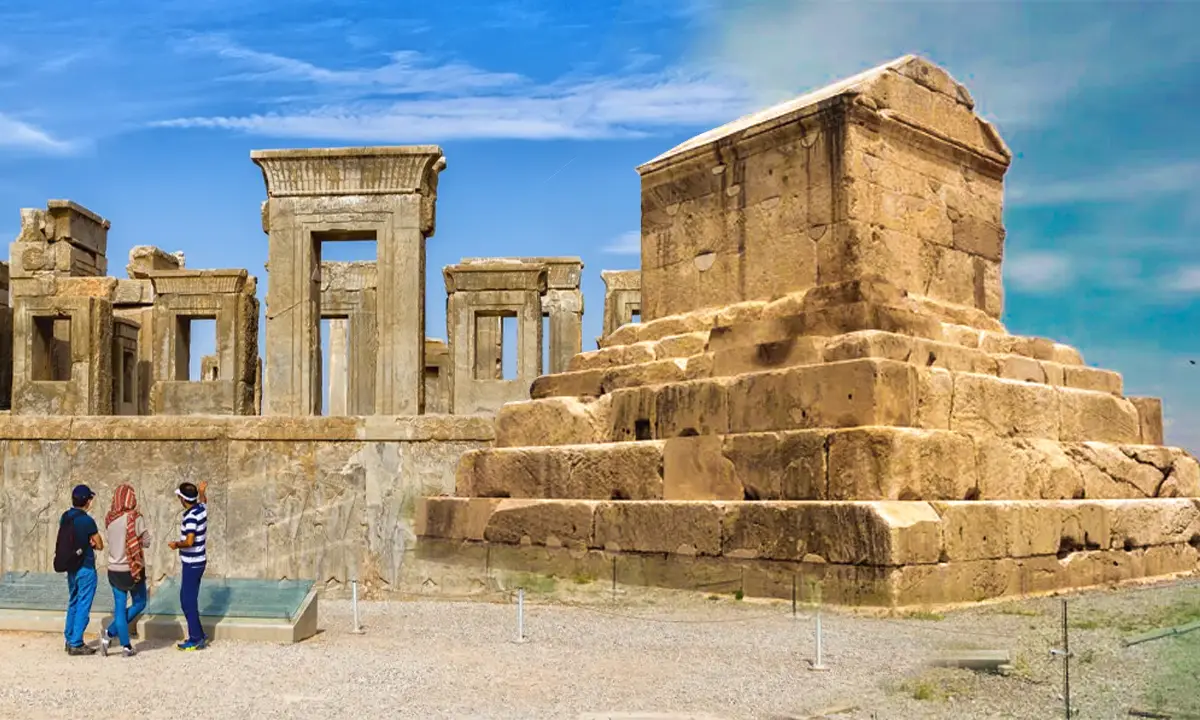The National Garden | One of the Oldest Symbols of Tehran
![]() Author : Alirezaa | Date : Sunday 01 December 2024 11:18
Author : Alirezaa | Date : Sunday 01 December 2024 11:18
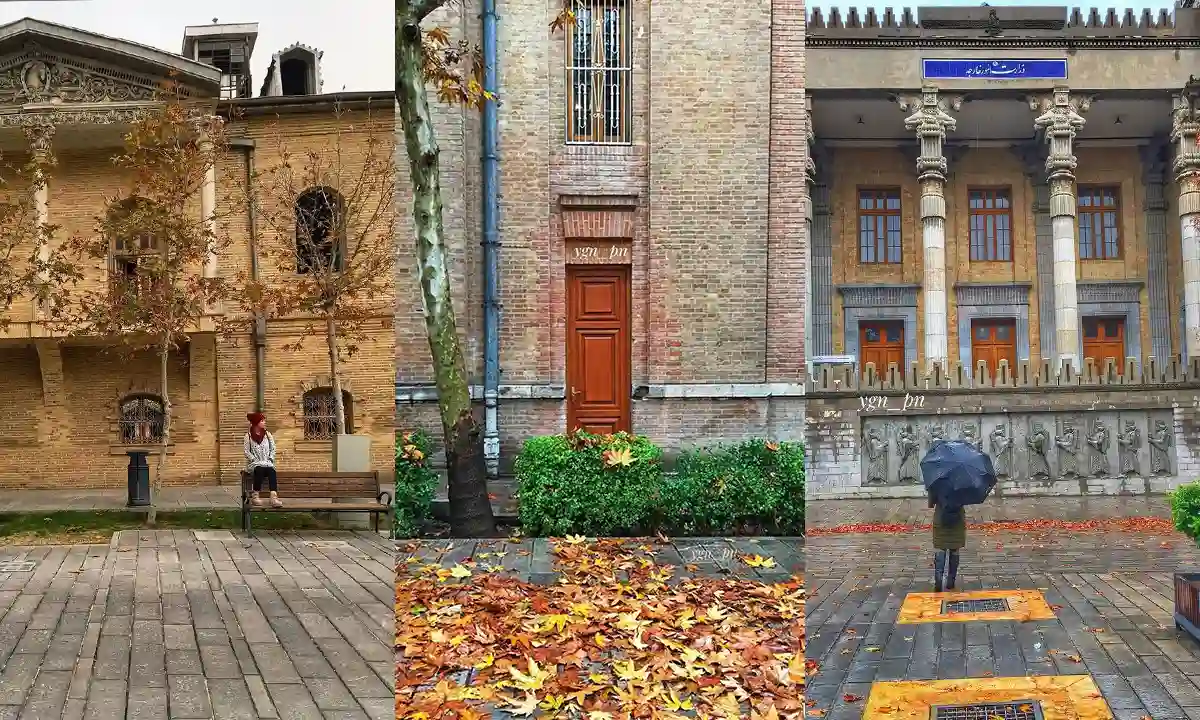
The National Garden (BAQ-E-MELLI) of Tehran, a historical and cultural landmark, stands as a testament to Iran's rich heritage and architectural grandeur. Originally established as a military square in the late 19th century under the Qajar dynasty, it has evolved into a cherished green space in the heart of Tehran. This garden is not only a tranquil oasis amidst the bustling city but also a symbol of Iran's historical evolution, showcasing the transition from a royal military site to a public cultural and recreational area. Today, the National Garden remains a pivotal site in Tehran, drawing visitors from across the nation and around the globe. Its significance lies not only in its historical roots but also in its role as a contemporary urban retreat, offering a unique blend of history, culture, and natural beauty to all who walk its paths.
Before You Visit the National Garden
Before planning your visit to The National Garden in Tehran, consider these essential details to ensure a smooth and enjoyable experience:
The National Garden Location:
Best Times of the Year to Visit the National Garden of Tehran
The National Garden offers distinct experiences throughout the year, but the best times to visit are during the spring (March to May) and autumn (September to November) seasons. During these months, the weather is most pleasant, with mild temperatures and the garden's foliage displaying vibrant colors. Spring brings the bloom of flowers, while autumn offers a scenic palette of fall foliage, making both seasons ideal for photography and strolls.
Opening Hours of the National Garden
The National Garden is typically open to the public every day, from early morning until sunset. However, opening hours can vary slightly with the changing seasons:
- Spring/Summer: 8:00 AM to 7:00 PM
- Autumn/Winter: 9:00 AM to 5:00 PM
It's advisable to check the latest opening times before your visit as holidays and special events may affect these hours.
Ticket Prices and Purchase Locations of the National Garden
Entry to The National Garden is generally free, reflecting its status as a public space dedicated to the enjoyment and recreation of both locals and tourists alike. However, for special exhibitions or events within the garden, there may be a separate charge. Information on such events and their ticket prices can usually be found on official tourism websites or directly at the garden's entrance.
Directions and Parking Information
The National Garden is centrally located in Tehran, making it easily accessible by various modes of transportation:
- Metro: The nearest metro station is "Imam Khomeini Square," from which the garden is a short walk away.
- Bus: Several bus lines serve the area around The National Garden. Visitors can use the city's bus service to get close to the garden.
- Car: For those driving to The National Garden, parking can be found in nearby lots and streets. However, given its central location, parking spaces can be limited, especially during peak hours and weekends. It is advisable to arrive early or consider public transportation options.
Preparing for your visit by noting these details will help ensure that your time at The National Garden is as enjoyable and hassle-free as possible.
Main Attractions: Things to do in the National Garden
The National Garden of Tehran, with its historical depth and architectural marvels, is home to several key attractions that offer visitors a glimpse into Iran's rich cultural heritage. Each site within the garden carries its historical significance and showcases unique architectural features.
The National Garden Gate (Bagh-e Melli Gate)
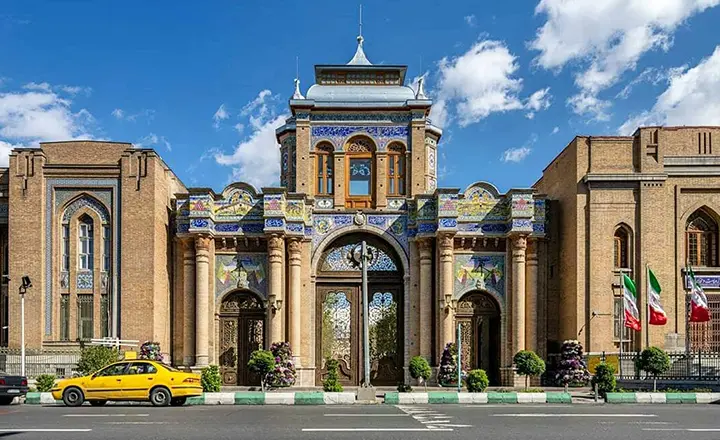
This iconic gate serves as the grand entrance to the garden, immediately welcoming visitors with its imposing presence.
Historical Context and Significance: Constructed in the early 20th century during the Pahlavi era, the gate was part of a modernization effort to introduce European architectural styles while blending them with Persian motifs. It symbolizes the country's aspirations towards modernity while maintaining its cultural roots.
Architectural Features: The gate is renowned for its towering columns and intricate tile work, featuring Persian motifs and Islamic calligraphy. The structure's design combines elements of Art Deco with traditional Persian architectural styles, creating a striking visual contrast.
The National Garden Boulevard
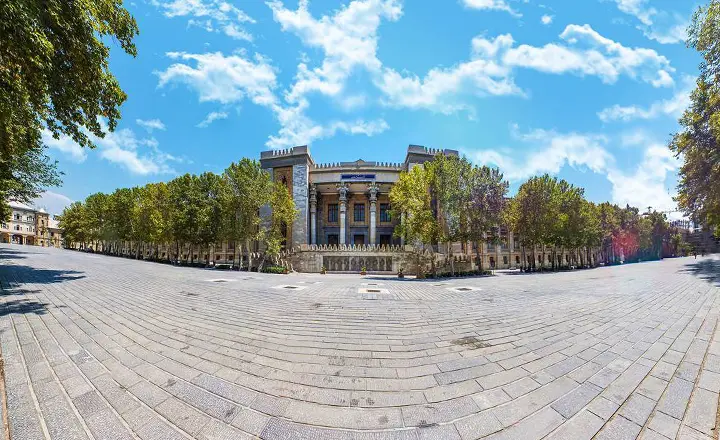
A sprawling, tree-lined boulevard that cuts through the heart of the garden, offering a serene walking path.
Historical Context and Significance: Once a military parade ground, it has been transformed into a public space that celebrates peace and leisure, reflecting the changing socio-political landscape of Iran.
Architectural Features: The boulevard is framed by mature trees and features beautifully landscaped areas with traditional Persian gardens, including fountains and pools that reflect the sky, creating a tranquil atmosphere.
The Parliament Building (Majles)
.webp)
Located adjacent to The National Garden, the Parliament Building is a significant political landmark.
Historical Context and Significance: As the seat of the Iranian Parliament, this building has been a focal point of Iran's political life since its construction in the 20th century, witnessing key historical events and decisions shaping the nation's future.
Architectural Features: The building showcases a blend of traditional Persian and modern architectural elements, symbolizing the country's governance structure's continuity and evolution. Its facade features intricate brickwork and a distinctive entrance, making it an architectural landmark.
The National Garden Museum
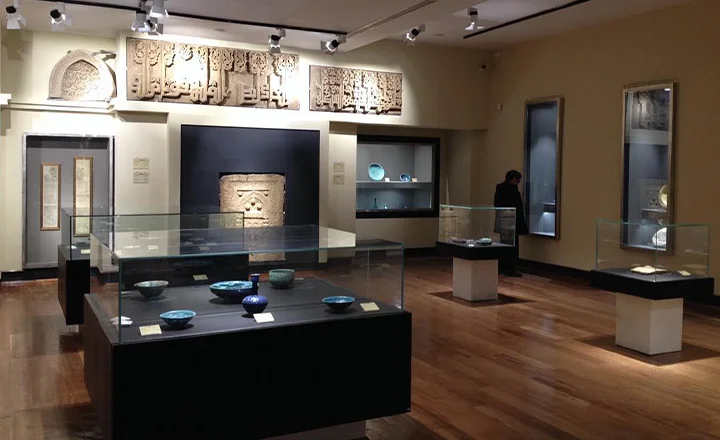
This museum, situated within the garden, houses a collection of artifacts and exhibits related to Iran's cultural and natural history.
Historical Context and Significance: The museum provides insights into the nation's diverse heritage, from ancient civilizations to modern times, offering a comprehensive overview of Iran's contribution to arts, science, and culture.
Architectural Features: The museum building itself is a piece of architectural beauty, with its design incorporating traditional Persian architectural styles, including domes, iwans (porches), and extensive tile work, providing a visually enriching backdrop to the historical artifacts housed within.
✔️Read More : Top Things To Do in Iran
Nearby Attractions and Landmarks to the National Garden of Tehran
- Golestan Palace: Just a short distance from The National Garden, this UNESCO World Heritage Site is one of Tehran's oldest historic monuments. The palace complex is an exquisite example of Qajar-era architecture, boasting beautiful courtyards, lush gardens, and intricately decorated interiors.
- The Grand Bazaar: For those interested in experiencing the bustling local commerce, the Grand Bazaar is a must-visit. This expansive marketplace is filled with hundreds of shops selling everything from spices and sweets to handmade crafts and Persian rugs.
- Museum of Contemporary Art: Art enthusiasts will appreciate the Tehran Museum of Contemporary Art, located near The National Garden. The museum houses a significant collection of modern and contemporary art, including works by both Iranian and international artists.
✔️Read More : Golestan Palace in Tehran: A Historic Masterpiece
Cafes and Restaurants nearby
- Café Naderi: A historic café located near The National Garden, Café Naderi is known for its old-world charm and serves as a meeting place for intellectuals and artists. Enjoy traditional Iranian dishes or a simple cup of tea in this atmospheric setting.
- Moslem Restaurant: Situated in the Grand Bazaar but worth the mention for those visiting The National Garden area, Moslem Restaurant is famous for its delicious Iranian stews. It's a great place to experience authentic Tehran cuisine in a bustling environment.
✔️Read More : Iranian Architecture | Know Iran
Last Word
As you plan your visit to The National Garden in Tehran, we encourage you to fully immerse yourself in the beauty and history that this remarkable site has to offer. From its stunning architecture and tranquil green spaces to the rich cultural heritage it embodies, The National Garden is a testament to Tehran's evolving story. As you explore, please remember to respect the garden's environment and preserve its heritage for future generations to enjoy. Whether you're wandering through its historical pathways, marveling at the architectural wonders, or simply enjoying a moment of peace in the city's heart, The National Garden is sure to provide a memorable experience. Let's all play our part in maintaining its beauty and significance.



.webp)

